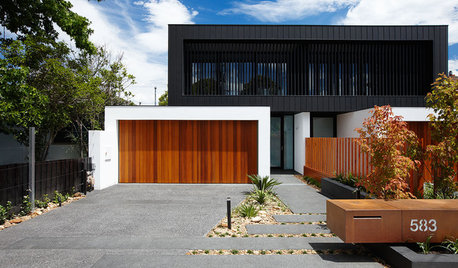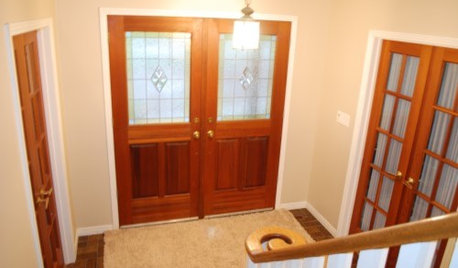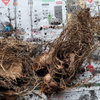Help me design a front planter
Liz
11 years ago
Related Stories

STANDARD MEASUREMENTSThe Right Dimensions for Your Porch
Depth, width, proportion and detailing all contribute to the comfort and functionality of this transitional space
Full Story
PETS6 Ways to Help Your Dog and Landscape Play Nicely Together
Keep your prized plantings intact and your dog happy too, with this wisdom from an expert gardener and dog guardian
Full Story
LANDSCAPE DESIGNHow to Help Your Home Fit Into the Landscape
Use color, texture and shape to create a smooth transition from home to garden
Full Story
EARTH DAYHow to Help Your Town’s Beneficial Birds and Bugs
Make a habitat using local materials to provide a home to the creatures that help our gardens
Full Story
CURB APPEAL7 Questions to Help You Pick the Right Front-Yard Fence
Get over the hurdle of choosing a fence design by considering your needs, your home’s architecture and more
Full Story
EXTERIORSMini-Me Mailboxes Add Curb Appeal
The spitting image of their parents or merely sharing some genes, these mailboxes show that good design goes beyond the front door
Full Story
UNIVERSAL DESIGNMy Houzz: Universal Design Helps an 8-Year-Old Feel at Home
An innovative sensory room, wide doors and hallways, and other thoughtful design moves make this Canadian home work for the whole family
Full StoryMore Discussions










marricgardens
ninamarie
Related Professionals
Rossville Landscape Architects & Landscape Designers · Saint Louis Park Landscape Architects & Landscape Designers · Frisco Landscape Contractors · Edinburg Landscape Contractors · Euclid Landscape Contractors · Holtsville Landscape Contractors · La Mirada Landscape Contractors · Lake Worth Landscape Contractors · Lewisville Landscape Contractors · Munster Landscape Contractors · North Chicago Landscape Contractors · Reedley Landscape Contractors · Wayland Landscape Contractors · White Bear Lake Landscape Contractors · Golden Valley Landscape ContractorsSusanne27
ianna
MicleRose
TexasRose72
luckygal
LizOriginal Author